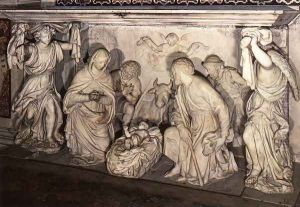Tommaso Orsolino Paintings
Tommaso Orsolino, also known as Tomaso Orsolini or Orsolino da Lugano, was an Italian sculptor of the Baroque period, born in 1587 in the Republic of Genoa, which is part of modern-day Italy. Orsolino was thought to have been born into a family of artists, which likely influenced his early artistic education and development. Although not as widely recognized as some of his contemporaries, Orsolino contributed significantly to the sculptural landscape of his time, particularly within the contexts of Genoa and Rome.
Orsolino's career is documented to have flourished in the early 17th century when he moved to Rome, which was then a vibrant center of art and culture, drawing artists from across Europe. Here, he worked and interacted with prominent figures of the Baroque movement, such as Gian Lorenzo Bernini, whose dynamic style may have influenced his own. Orsolino's works are characterized by a sense of movement and expressiveness, hallmarks of the Baroque style, which sought to evoke emotion and grandeur.
Despite the prominence of Bernini and others, Orsolino managed to establish himself as a competent sculptor in his own right, receiving commissions for various religious and decorative sculptures. One of his notable works is the marble relief 'The Death of Saint Petronilla' for St. Peter's Basilica, which demonstrates his ability to handle complex compositions and imbue them with a sense of drama and narrative depth. He also worked on the tomb of Pope Urban VIII, again showcasing his skill in a significant ecclesiastical context.
Orsolino's death is recorded as being in 1675. While his legacy may not have the same enduring fame as Bernini or other luminaries of the Baroque era, his contributions to the art of sculpture during his lifetime were substantial. Today, his works can be found in churches and collections in Italy, bearing witness to his artistry and the rich artistic environment of the Baroque period in which he worked.
